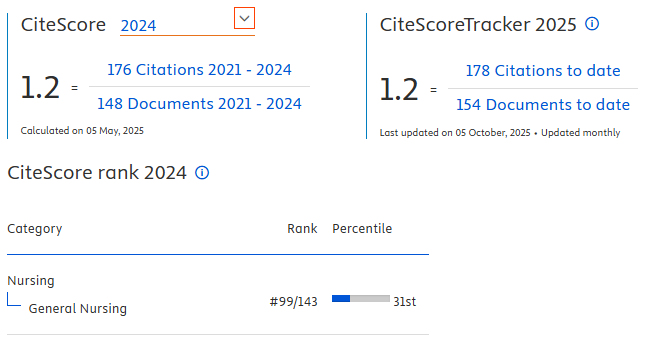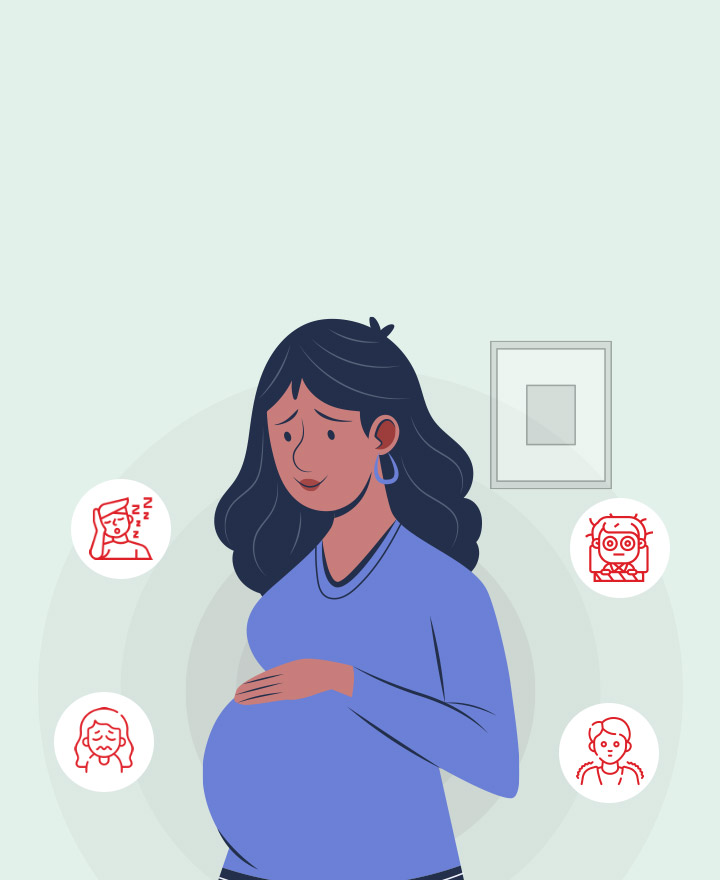Perspectives of Pregnant Women Regarding Iron Deficiency Anemia
Downloads
Introduction: Iron deficiency anemia (IDA) is a global health problem. The prevalence of anemia in pregnancy worldwide is nearly half of pregnant women. It impacts on women and offspring outcomes during pregnancy, intrapartum and postpartum period associated with increasing rate of preterm labor, pregnancy induced hypertension, low birth weight, perinatal death including postpartum hemorrhage, postpartum infection, unsuccessful rate of exclusive breast feeding, and postpartum depression. Inadequate iron intake, maternal physiological changes during pregnancy, and bleeding were indicated as common causes of IDA in pregnancy. The objective was to explore the experiences of pregnant women regarding IDA.
Methods: A total of eighteen women between 16-36 weeks gestation participated in the qualitative research. Women were selected by purposive sampling according to inclusion criteria to in-depth interviewed at antenatal care clinic, Watbot hospital, Phitsanulok, Thailand.
Results: Thematic analysis of the qualitative interviews identified four main themes: iron-deficiency anemia in pregnant as a normal pregnancy; concern on food rather than hematocrit (Hct) level; maternal instinct in healthy baby; and low socioeconomic as a main obstacle.
Conclusion: The findings illustrated to enhance better understanding the nature, attitude, knowledge, perception, and behavior of pregnant women on IDA, facilitators to support women for healthy behavior, and barriers to IDA in pregnancy based on Thai context.American College of Obstetricians and Gynecologists (ACOG). (2008). ACOG Practice bulletin-Clinical management guidelines for Obstetrician-Gynecologists: Anemia in pregnancy. Obstetrics & Gynecology, 112(1), 201–207.
Anney, V. N. (2014). Ensuring the Quality of the Findings of Qualitative Research: Looking at Trustworthiness Criteria. Journal of Emerging Trends in Educational Research and Policy Studies (JETERAPS), 5(2), 272–281.
Baillie, L. (2015). Promoting and evaluating scientific rigour in qualitative research. Nursing Standard, 29(46), 36–42.
Bilimale, A., Anjum, J., Sangolli, H.N., & Mallapur, M. (2010). Improving adherence to oral iron supplementation during pregnancy. Aust Med J, 3(5281–90).
Braun, V. & Clarke, V. (2006). Using thematic analysis in psychology. Qualitative Research in Psychology. 3(2), 77–101.
Bureau of Nutrition, Department of Health, M. of P. H. (2011). Nutritive values of Thai foods. Department of Health, Ministry of Public Health.
Camaschella, C. (2015). Iron-deficiency anemia. New England Journal of Medicine, 372(19), 1832–1843.
Center of Disease Control (CDC). (1989). CDC Criteria for anemia in children and childbearing-aged women. MMWR Morbidity and Mortality Weekly Report, 138(22), 400–404.
Chatterjee, N., & Fernandes, G. (2014). "This is normal during pregnancy”: A qualitative study of anaemia-related perceptions and practices among pregnant women in Mumbai, India. Midwifery, 30(1), e56–e63.
Creswell, J. W. (2014). Research Design: Qualitative, Quantitative and Mixed Methods Approaches (4th ed.). SAGE Publications.
Department of Health, M. of P. H. (2017). Health data centre for standard on maternal and child care service of Department of Health, Ministry of Public Health. http://www.hpc.go.th/director/data/ standardUpload/LR_profile_090217_105208.pdf
Department of Health, M. of P. H. (2018). Standard of care on maternal and child service of Department of Health, Ministry of Public Health. http://www.hpc. go.th/director/data/standardUpload/LR_profile_090217_105208.pdf.
Food Division, Bureau of Food, Food and Drug Administration, M. of P. H. (2016). Knowledge of food and nutrition for all ages. Food and Drug Administration.
Goonewardene, M., Shehata, M., & Hamad, A. (2012). Anemia in pregnancy. Best Practice & Research Clinical Obstetrics and Gynaecology, 26(1), 3–24.
Hawkins, R.B., Charles, E.J., & Mehaffey, J. H. (2010). Socioeconomic Status and Coronavirus Disease 2019 (COVID-19) Related Cases and Fatalities. Public Health. https://doi.org/https://doi.org/ 10.1016/j.puhe.2020.09.016
Holloway, I., Wheeler, S., & Holloway, I. (2010). Qualitative research in nursing and healthcare: Chichester (3rd ed.). Blackwell.
Kaljarueg, P. (2017). Anemia among pregnant women at U-Thong Community hospital, U-Thong district, Suphanburi province. Nursing Journal of the Ministry of Public Health, 27(1), 22–32.
Lowdermilk, D.L., Perry, S.E., Cashion, K., & Alden, K. . (2016). Maternity & Women's health care (11th ed.). Elsevier.
Maha, S.S., Tondare, S.B., & Tondare, M. . (2011). Study of impact of anemia on pregnancy. International Journal of Reproduction, Contraception. Obstetrics and Gynecology, 6(11), 4847–4850.
Martin, A., Markhvida, M., Hallegatte, S. & Walsh, B. (2020). Socio-Economic Impacts of COVID-19 on Household Consumption and Poverty. Economics of Disasters and Climate Change, 4, 453–479. https://doi.org/https://doi.org/10.1007/s41885-020-00070-3
Murray-Kolb, L.E., Chen, L., Chen, P., Shapiro, M., & Caulfield, L. (2012). CHERG Iron report: Maternal mortality, child mortality, perinatal mortality, child cognition, and estimates of prevalence of anemia due to iron deficiency. CHERG.
Pinchaleaw, D. (2017). Nurses and management of iron deficiency anemia in pregnant women. Journal of the Police Nurses, 9(2), 195–201.
Pipatkul, W., Sinsuksai, N., & Phahuwatanakorn, W. (2015). Effects of a nutrition and iron supplement promoting program on iron deficiency anemia in pregnant women. Journal of Nursing Science, 33(1), 69–76.
Reinold, C., Dalenius, K., Brindley, P., Smith, B., & Grummer-Strawn, L. (2012). Pregnancy nutrition surveillance 2008 report. U.S.Department of Health and Human Service.
Senanayake, H.M., Premaratne, S.P., Palihawadana, T., & Wijetrat, S. (2010). Simple educational intervention will improve the efficacy of routine antenatal iron supplementation. J Obstet Gynaecol Res, 36(3), 646–650.
Shenton, A. (2004). Strategies for ensuring trustworthiness in qualitative research projects. Education for Information, 22(2), 66–67.
Sirisopa, N. & Pongchaidecha, M. (2015). Evaluation of a Pharmaceutical care program with pregnant women with Iron deficiency anemia. Journal of Science & Technology, Ubon Ratchathani University, 17(2), 53–62.
Sookdee, J., Wanaratwichit, C. (2016). Factors affecting iron deficiency anemia among pregnant women receiving antenatal care at sub-districts health promoting hospital. Journal of Health Science Research, 10(1), 1–7.
Sukkai, C., Khiewyoo, J. (2012). Factors related to anemia among pregnant women in Khaopanom district, Krabi province. Srinagarind Med J, 27(2), 133–138.
Tana, C. (2017). Anemia in pregnancy. http://www.med.cmu.ac.th
Tandon, R., Jain, A., & Malhorta, P. (2018). Management of Iron deficiency anemia in preganancy in India. Indian Journal of Hematology Blood Transfusion, 34(2), 204–215.
Techakampholsarakit, L., Kantaruksa, K., & Sansiriphun, N. (2018). Interventions to promote anemia prevention among pregnant women: A systemic review. Nursing Journal, 45(1), 62–74.
WHO. (2011). Haemoglobin concentrations for the diagnosis of anaemia and assessment of severity. WHO.
WHO. (2012). The Global Prevalence of Anemia in 2011. WHO.
WHO. (2016). WHO recommendations on antenatal care for a positive pregnancy experience. WHO.
Authors who publish with Jurnal Ners agree to the following terms:
- Authors transfer the Copyright and grant Jurnal Ners the right of first publication with the work simultaneously licensed under a Creative Commons Attribution 4.0 International License that allows others to remix, adapt and build upon the work with an acknowledgment of the work's authorship and of the initial publication in Jurnal Ners.
- Authors are permitted to copy and redistribute the journal's published version of the work (e.g., post it to an institutional repository or publish it in a book), with an acknowledgment of its initial publication in Jurnal Ners.
Jurnal Ners requires a formal written declaration and transfer of copyright from the author(s) for each article published. We, therefore, ask you to complete and return this form, retaining a copy for your own records. Your cooperation is essential and appreciated. Any delay will result in a delay in publication. The form can be downloaded HERE.
































